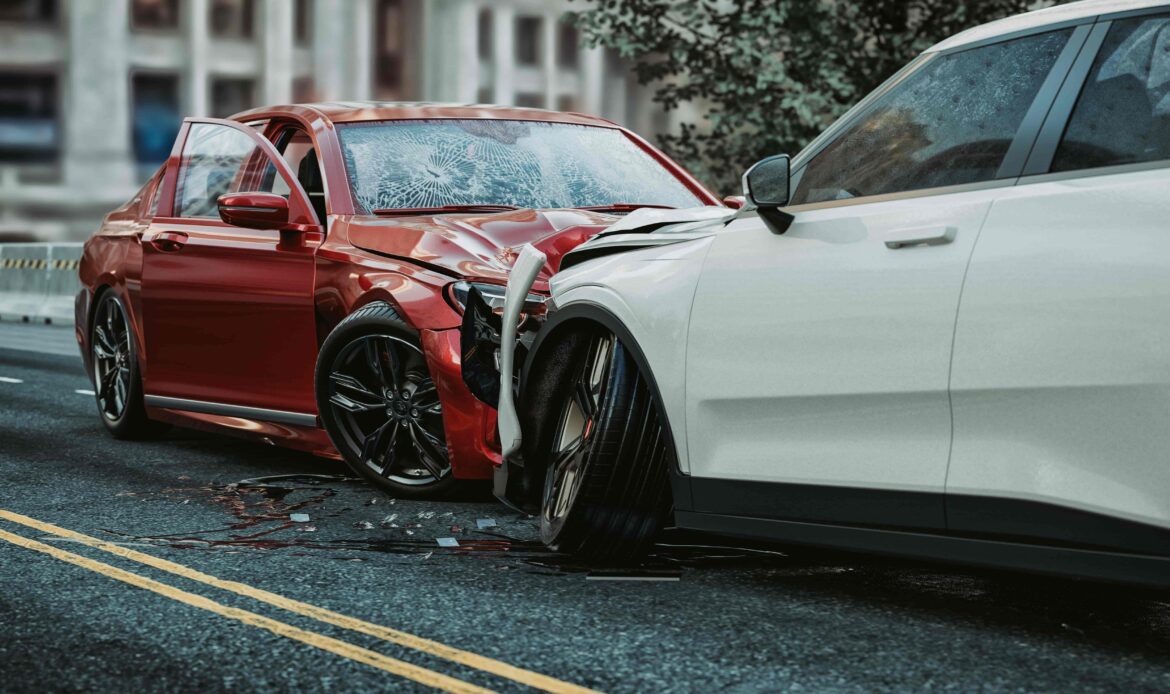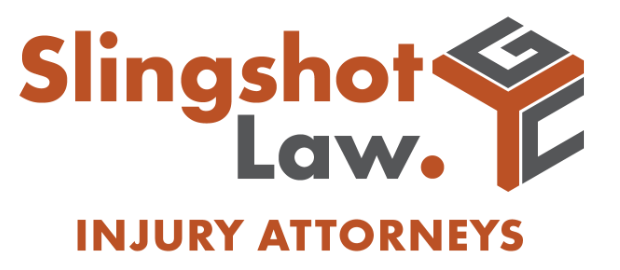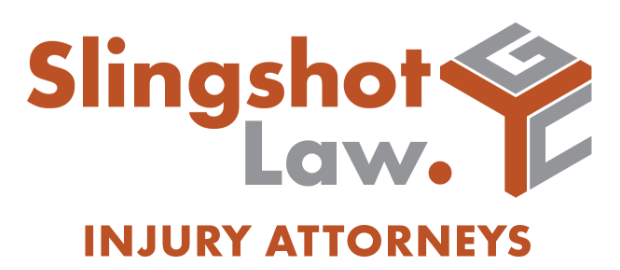Statistics can feel cold and impersonal. They are just numbers on a page until one of them represents you, a family member, or a friend. Each data point within the Grand Junction motor vehicle accident statistics tells a human story—a commute to work, a trip to the grocery store, a drive home that was suddenly and violently interrupted.
If you’re reading this, you may be trying to make sense of your own story after a crash. The shock, the confusion, and the questions about what comes next are completely normal. This information is meant to provide clarity and context during a difficult time, helping you understand the road ahead.
Key Takeaways about Grand Junction, CO Motor Vehicle Accident Stats
- The most recent national data indicate a second consecutive year of decreased motor vehicle fatalities, though crashes still resulted in 44,762 deaths and 5.1 million medically consulted injuries.
- The total economic cost of motor vehicle incidents in the U.S. that year was estimated at a staggering $513.8 billion, covering everything from medical expenses to lost productivity.
- In Colorado, there were 720 traffic-related fatalities, reflecting the serious risks present on state highways and local roads.
- Specifically in Grand Junction, data reported 9 fatal accidents resulting in 9 deaths, with pedestrians being involved in a significant portion of these tragic incidents.
- Understanding local and national statistics provides context for the importance of road safety and the legal protections available to those injured by another’s negligence.
A National and Statewide Look at the Numbers
To fully appreciate the situation in Mesa County, it helps to start with the bigger picture. According to the most recent National Safety Council (NSC) data, while motor vehicle deaths in the United States decreased slightly, the numbers remain alarmingly high. Across the country, 44,762 people lost their lives in crashes. This figure is a stark reminder of the potential dangers every time we get behind the wheel.
Beyond these fatalities, the data reveals an even wider scope of impact. In one year alone, an estimated 5.1 million people suffered injuries serious enough to require medical consultation. The financial ripple effect of these incidents is immense, with total costs reaching over $513 billion. This isn’t just about vehicle repairs; this number includes:
- Medical Expenses: The cost of emergency services, hospital stays, surgeries, physical therapy, and ongoing medical care.
- Wage and Productivity Losses: The income a person loses when they are unable to work, both temporarily and permanently, as well as the value of lost productivity to their employer and the economy.
- Administrative Expenses: The costs associated with processing insurance claims and managing the legal aftermath of a crash.
These national statistics provide a sobering backdrop for what we see closer to home. Here in Colorado, the roads we travel every day, from I-70 to the scenic route over the Grand Mesa, saw 720 traffic fatalities in one year. Each number represents a person, a family, and a community forever changed by a single moment.
Bringing the Statistics Home to Grand Junction
While state and national numbers give us context, the local data hits closest to home. For those of us who drive on North Avenue or Patterson Road daily, the Grand Junction motor vehicle accident stats are a direct reflection of our community’s experience.
In one year, the city of Grand Junction recorded the following:
- Fatal Accidents: 9
- Total Fatalities: 9
- Vehicles Involved: 10
- Pedestrians Involved in Fatal Accidents: 4
These numbers, while smaller than statewide figures, are profoundly significant. The fact that pedestrians were involved in nearly half of the fatal incidents highlights a specific vulnerability in our community.
It’s a crucial reminder for both drivers and pedestrians to remain vigilant, whether crossing at a busy intersection downtown or walking along a neighborhood street. A single moment of inattention can have devastating consequences.
Understanding the Common Causes Behind the Collisions

Statistics tell us what happened, but they don’t always explain why. Most motor vehicle accidents are not truly “accidents” in the sense that they are unavoidable. They are often the result of a specific choice or mistake. Understanding these common causes can help us all become safer drivers and better advocates for road safety.
Some of the most frequent contributing factors include:
- Distracted Driving: This has become a leading cause of crashes nationwide. It’s not just about texting; it includes changing the radio, talking to passengers, eating, or anything else that takes a driver’s attention off the primary task of driving safely.
- Speeding and Aggressive Driving: Exceeding the speed limit, tailgating, and making unsafe lane changes dramatically reduce a driver’s reaction time and increase the severity of a crash. Driving at a safe speed is one of the most effective ways to prevent serious injury.
- Driving Under the Influence (DUI): Although Grand Junction reported zero fatal accidents involving drunk drivers in 2023, driving while impaired by alcohol or drugs remains a major cause of catastrophic injuries and deaths across Colorado and the U.S.
- Driver Fatigue: Drowsy driving can be just as dangerous as drunk driving. A tired driver has slower reflexes and impaired judgment, making them a hazard to everyone on the road.
Recognizing that these crashes are often caused by negligence—a legal term that simply means someone failed to act with reasonable care—is key. When another person’s carelessness causes you harm, you have rights.
Steps to Take After a Motor Vehicle Accident
After a car wreck, the immediate aftermath is a blur of emergency responders and information exchange. But the real journey often begins when you get back home. The physical pain, emotional stress, and a ringing phone can be overwhelming. Here are a few practical steps to consider as you begin to navigate your recovery.
- Prioritize Your Health: Your well-being is the top priority. If you were advised to see a doctor, make that appointment. Attend all follow-up visits and physical therapy sessions. Some injuries, like whiplash or concussions, may not show symptoms immediately, so it’s vital to get a thorough medical evaluation.
- Document Everything: Start a file to keep all crash-related documents together. This includes the police report, medical bills, receipts for prescriptions, and any correspondence from insurance companies. It’s also helpful to keep a simple journal detailing your pain levels, physical limitations, and how the injuries are affecting your daily life.
- Understand Insurance Calls: You will likely receive a call from the other driver’s insurance adjuster very quickly. It’s important to remember that their job is to protect their company’s financial interests, which often means minimizing the value of your claim. You are not obligated to give them a recorded statement right away. It is often wise to understand your rights before speaking with them at length.
Taking these organized steps can help bring a sense of control to a chaotic situation and protect your ability to seek fair compensation for your injuries and losses.
The True Financial Impact of a Car Accident

The $513.8 billion national cost figure is hard to comprehend, but when you’re the one injured, those costs become very real and very personal. The financial strain can be one of the most stressful parts of recovering from a collision. It’s not just the immediate bills; the long-term consequences can be significant.
In a personal injury claim, the compensation sought is meant to cover these harms and losses, which are often referred to as “damages.” These can include:
- Economic Damages: These are the tangible, calculable financial losses. They cover things like all current and future medical treatment, lost income from being unable to work, and the cost to repair or replace your vehicle.
- Non-Economic Damages: These are intangible losses that don’t have a precise price tag but are just as real. This category includes compensation for physical pain, emotional distress, mental anguish, and the loss of enjoyment of life.
In Colorado, an at-fault state, the person or party responsible for causing the crash is also responsible for covering these damages. All drivers are required to carry liability insurance to cover these costs. However, dealing with the claims process to receive fair compensation can be a complex battle, especially when you are trying to focus on healing.
What Does the Future Hold for Road Safety?
Looking at the accident statistics and the broader trends, it’s clear that while some progress has been made, there is still much work to be done. Advances in vehicle safety technology, such as automatic emergency braking and lane-keeping assist, offer hope for a safer future. Public awareness campaigns about the dangers of distracted and impaired driving also play a crucial role.
As a community, we can all contribute by committing to safe driving practices. That means putting the phone away, obeying speed limits, and never driving under the influence. When we share the road, whether we’re in a car, on a bike, or on foot, we share a responsibility to look out for one another’s safety. But when another’s failure to uphold that responsibility causes harm, our legal system provides a path to hold them accountable.
Grand Junction Motor Vehicle Accident FAQs
Here are some answers to common questions people have after being involved in a car crash in Mesa County.
What should I do if the at-fault driver is uninsured or underinsured?
If the driver who caused the accident doesn’t have insurance or doesn’t have enough to cover your damages, you may be able to file a claim through your own insurance policy, provided you have Uninsured/Underinsured Motorist (UM/UIM) coverage. This is an optional but highly recommended part of any auto insurance plan in Colorado.
How long do I have to file a personal injury claim in Colorado?
Colorado has a “statute of limitations,” which is a legal deadline for filing a lawsuit. For most motor vehicle accident injury claims, this deadline is three years from the date of the accident. It is important to be aware of this deadline, as waiting too long can prevent you from being able to seek compensation.
What does it mean that Colorado is an “at-fault” state?
An “at-fault” or “tort” system means that the person who is legally responsible for causing the accident is also responsible for paying for the resulting damages. This is why determining fault is a critical part of any car accident claim. Your claim will be filed with the at-fault driver’s insurance company.
Are accident claims involving pedestrians or cyclists handled differently?
The core principles of negligence and liability are the same, but these cases can have unique complexities. Drivers have a high duty of care to watch for vulnerable road users like pedestrians and cyclists. Investigating these cases often involves analyzing crosswalk laws, driver visibility, and other specific factors.
Is it necessary to go to court to resolve a car accident claim?
The vast majority of car accident claims are settled out of court through negotiations with the insurance company. A settlement is an agreement where the insurance company pays an agreed-upon amount to resolve the claim. However, if a fair settlement cannot be reached, filing a lawsuit may be the necessary next step to pursue the compensation you deserve.
Let Us Handle the Fight.

The numbers and statistics can feel impersonal, but at Slingshot Law, we know that behind every case is a person whose life has been turned upside down. You’re dealing with pain, stress, and uncertainty about the future. You shouldn’t have to fight a legal battle against a giant insurance company at the same time.
Our firm was founded on the principle that everyone deserves a fair fight. We see ourselves as the slingshot in your battle against Goliath. If you have been injured in a motor vehicle accident in Grand Junction or Austin, you don’t have to face this alone. We are here to listen to your story, answer your questions, and provide guidance on your options.
Contact Slingshot Law today at (866) 647-1311 or through our online form for a free, no-obligation case review, and let us help you on the road to recovery.


